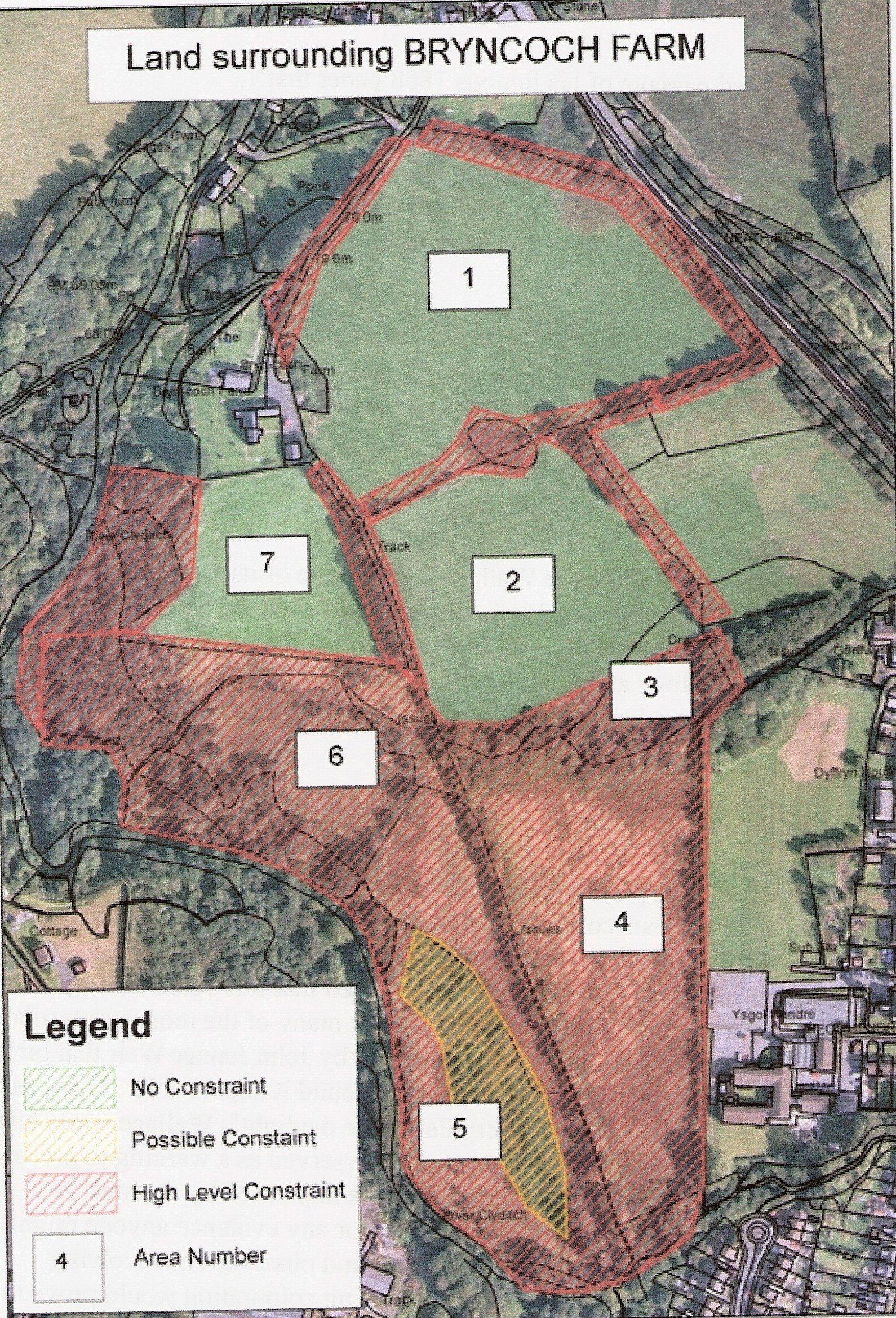Ecology
Neath Port Talbotís ecologists have undertaken a basic investigation of most of the site. The Map below summarises their findings. Areas 1, 2, 7 are areas of improved grassland Area 3 is predominantly Willow Carr Areas 4,5,6 are Purple Moor-grass and Rush Pasture Areas diagonally hatched in red are levels of high constraint for development. The following verbatim comments are taken from the accompanying report (except those in bold)
The eastern boundary of the site is mostly formed by mature native hedgerows and the hedge-banks supporting mature trees such as Oak. All such features should be retained for their ecological and historical value and be protected from development by way of fencing installed prior to development (high constraint areas)
An old track/green lane forms the eastern boundary of Field 7. The track is lined with Oak trees and is likely to be valuable both as a wildlife corridor and a historical feature. These mature trees may support Bats which are a European Protected Species.
Fields 4,5,6 are dominated by rush species. The frequency of rushes and other plants associated with damp concitions mean that these areas are classified as purple Moor-grass and Rush Pasture and, as a priority habitat, should be retained and protected from the effects of nearby development (eg adjustments to water level). Field 6 is particularly rich habitat, vegetation dominated by Purple Moor-grass, with flowering plants including Ling, Tormentil and Devilís bit Scabious, the wettest areas supporting Sphagnum.
Independent advice suggests that fencing off is insufficient - these areas need to be grazed by cattle or horses and manged to prevent the ingress of oak/alder/willow woodland or the habitat could be lost within a decade.
A small pond lies on the border between fields 1 and 2. Whilst not currently in optimum condition, it is likely to support wildlife such as amphibians and Dragonflies. Ponds are a local Biodiversity Action Plan priority Habitat.
There may be localised constraints to the development posed by species such as badgers, bats, otter and nesting birds. This will need to be addressed by way of specific surveys to be undertaken by suitably qualified persons near the time of submission of the appropriate planning applications.
Why isnít this done now before deciding development is appropriate??
The reporting Council Ecologist describes the requirement that the hedges, ancient roadway and sensitive areas be fenced off. these can have no hope of being maintained to their current level of biodiversity when landlocked by a large scale housing development.this has been confirmed to us by a prominent independent ecologist.
The independent Ecological Survey Report is now available - to read click here.
